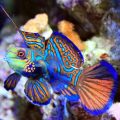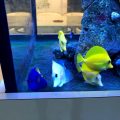Fish diseases and how to Diagnosing a Sick Fish
Nobody likes to see their fish sick. But once it happens, everyone will try to look for a cure. But first you need to diagnose the fish first in order to find a suitable treatment or medicine for it. You can also check out out marine fish diseases discussion section HERE where members share their experiences on treatment.
Today I’ll talk about the ID of common disease on fishes which I hope I’m able to help you all with ID it.
DISCLAIMER: I’m not a researcher but writing this out of my experience to help. If you have a different experience and want to share, do share your issue on our forum so that fellow hobbyist can try to help you /
The Cryptocaryon irritant (also commonly known as Marine Ich) is a ciliate protozoan that becomes a parasite for marine fish. The Oodinium (Marine Velvet) is a dinoflagellate unicellular parasite of fresh water and marine fish. These two diseases perhaps one of the most common types of diseases that each and every marine hobbyist will come across in certain stages of their reefing journey.
Both are actually pretty similar in the eyes of a hobbyist.
Oodinium is a genus of parasitic dinoflagellates. Require host to survive and they often attack soft part of the host tissue first, gills.
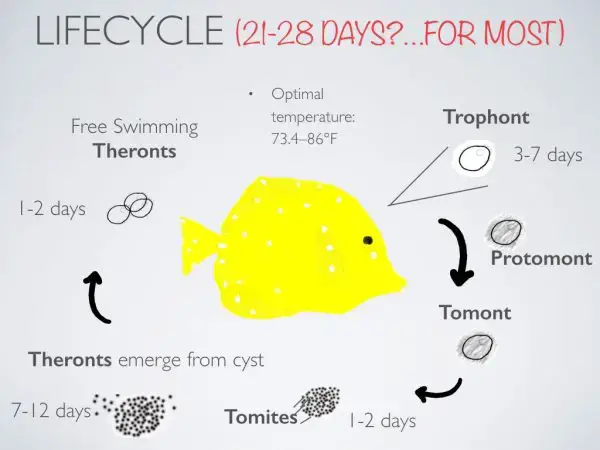
Picture from https://www.saltwateraquariumblog.com/treat-saltwater-ich-fish/
Here it goes, very honest observation and description.
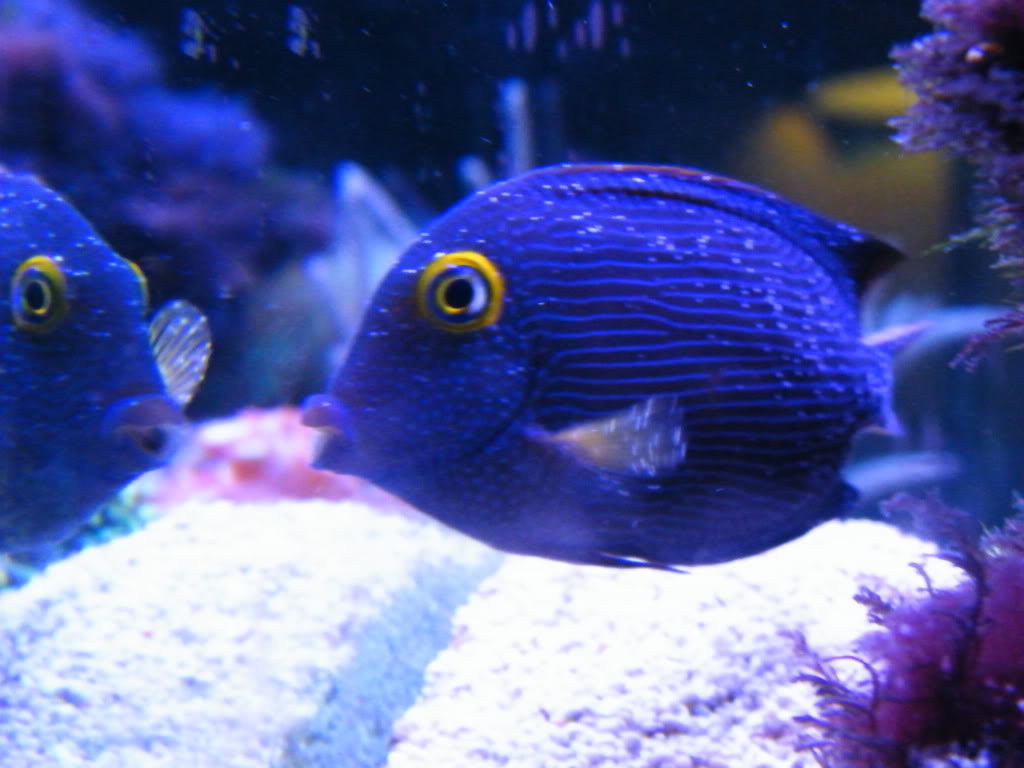
Name: Marine Ich
Symptom :
- Fish loss of appetite.
- Aggressive fish will lose their aggressiveness.
- White spots start to appear on the body.
- Fish will rub its body on glass, rock, or any surface.
- Fish will swim towards cleaner shrimp very often.
- Fish will lose their coloration, this is often due to stress.
- Breathing very heavily.

Name: Marine Velvet
Symptom :
- Fish loss of appetite.
- Aggressive fish will lose their aggressiveness.
- Fish will rub its body on glass, rock, or any surface.
- Fish will swim towards cleaner shrimp very often.
- Fish will lose their coloration, this is often due to stress.
- Breathing very heavily.
- Cloudy Eyes
- White Spot is too much, can’t be counted.
- Very Tiny white dot, unlike Ich.
- More deadly than ich, you can see fish swim towards wavemaker/return pump.

Name: Brookynella
Symptom :
- Fish loss of appetite.
- Fish will rub its body on glass, rock, or any surface.
- Fish will swim near-surface to reach for air.
- Breathing very heavily.
- Excessive slime coming out of the fish body.
- Tiny dots appear on the fish body. Not as massive as velvet.. Look like skin fission/tear.
- Redness and fin rot appear on the fish body.
- Fish will swim slanted or disorderly manner.
- Often appear on Clownfish (Brooklynella was originally known as clownfish disease because it was most common in that type of fish.)

Name: Fluke
Symptom :
- Fish loss of appetite.
- Aggressive fish will lose their aggressiveness.
- Fish will rub its body on glass, rock, or any surface.
- Fish will swim towards cleaner shrimp very often.
- Look like a flatworm, white spot on body will move time to time.
- Breathing very heavily.
- Excessive Slime on body.
- Cloudy eyes.
- Head twitching and shaking.
At 25-26 celsius, it takes 4-6 days for the eggs to catch. Once hatch, it will float on the water column to find a host and crawl on its body. They will try to dig into the fish body and will typically feed on the host for 17- 19 days. It will turn adults in the meantime can continue to the cycle of laying egg.
You can often see it crawling after a freshwater dip.
Name: HLLE (Hole-In-The-Head Disease)
Symptom :
- Literal Line becomes VISIBLE.
- Erosion, fission, and pitting appear along with the head and along the literal line.
- The literal line and head appear to be grey and white in coloration.
- Erosion might appear on the head of fishes, sizing from pinhole and slowly spread out.
- Head twitching and shaking.
- Fish will lose their coloration, this is often due to poor water condition.
Literal Line
The lateral line is a specialized organ in fish that allows them to sense vibrations in the water around them.
Name : Swim Bladder Disorder
Symptom :
- Fish loss of appetite.
- The stomach looks full but is actually bloated.
- White stringy feces.
- Fish is swimming upright most of the time. Meaning Tail down.

Name: Internal parasites/flagellates
Symptom :
- Pinched stomach.
- Loss of appetite but still eating very little and getting skinnier.
- White stringy feces.
- Loss of coloration.
Pinch stomach sometimes is because fish is starving before shipment. Try to observe the fish faeces to tell whether is an internal parasite or not.
Name: Rotten/ Infection
Symptom :
- Redness on the fish fin.
- Timid and hiding at all times.
- Some fish will produce excessive slime.
- Fish will lose their coloration, this is often due to stress.
- Commonly appear on Large Angelfish.
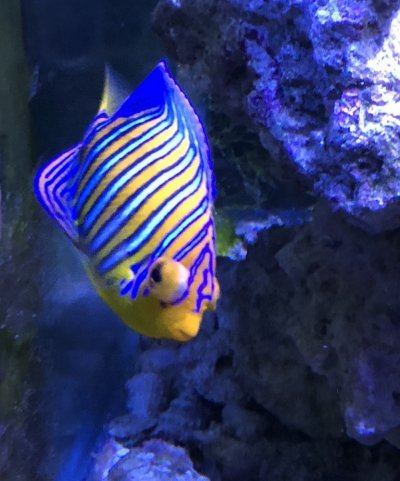
Name: Pop Eye
Symptom :
- One side of the eye appears to be “pop” out of the fish.
- Usually will last for months.
- Fish appear to have trouble swimming due to not visible.
- Eye sometimes can appear to be clear and not cloudy.

Name : Black Spot parasite
Symptom :
- Black spot appears on the fishes body and head.
- Fish will rub its body on glass, rock, or any surface.
- Fish appear to have trouble breathing.

My Gem Tang before and after a Marine Velvet attack, want to learn more on recovery?
Yes, if there’s a white spot on gem tang it will be visible too haha.
Prevention?
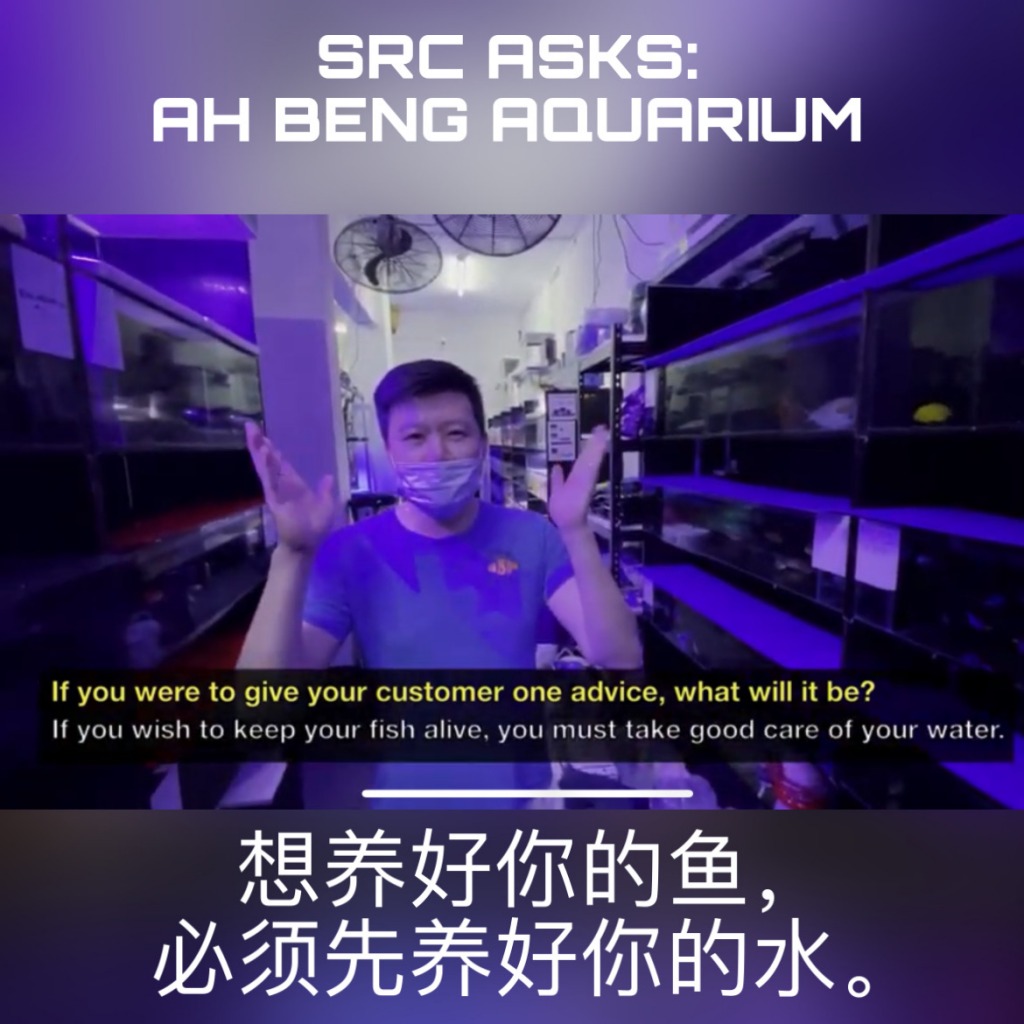
As quoted by Darren from ABA, if you want to take good care of your fish, you must first take good care of your water!
You can watch the video here below!
The most effective way to prevent any fish diseases in your marine saltwater aquarium tank is to either buy from a reputable fish source or quarantine all your newly purchased fish before entering your tank. You can check out our article here on preventing fish diseases and also how to quarantine your new fish
So after you diagnose? What next?
Is time to find treatment especially for that particular disease. In the next article, I will write about how to treat the diseases accordingly.
And of course. Keep your fish-eating, a healthy fish will get immune or resistant to it and will recover over time. Till next time!
You can also create a thread on our forum here and post the image of your sick fish. Everyone will help you diagnose and suggest how to cure it!

